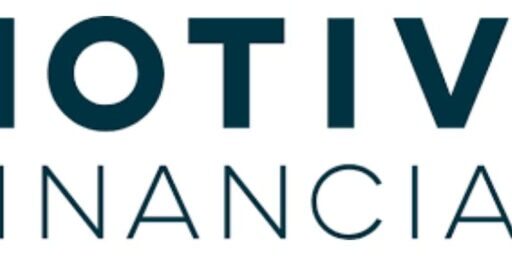Smith Manoeuvre/Dividend Portfolio – Q1 2014 Update
For those of you just joining us, listed below is my portfolio that is leveraged with money borrowed from my home equity line of credit (HELOC). As the money borrowed is used to invest, the interest charged is tax deductible. I started this portfolio in 2008 (at the height of the market) and write updates every quarter (or so) to show new positions added along with any market gains/losses. For more details on the strategy and procedure, check out my modified smith manoeuvre strategy and my comparison of online stock brokerages.
It has been about three months since the last update (Dec 2013) with a quite a bit of activity in the leveraged portfolio. I added to a few existing positions, added two new positions, and received dividend raises (and a drop) along the way.
Added to existing positions:
- 50 shares of TD Bank (TD) via 2:1 stock split;
- 25 shares of Rogers Communications (RCI.B);
- 50 shares of Corus Entertainment (CJR.B); and,
- 50 shares of Potash Corporation.
Added new positions:
- 450 shares of Major Drilling Group (MDI); and,
- 600 shares of Bombardier Inc (BBD.B).
I purchased MDI because it appeared to be undervalued, with decent financials and a dividend that has increased annually over the past five years. In addition, it gives the portfolio some exposure to the resource sector. BBD.B was also purchased because it appeared to be oversold and it pays a dividend. Bombardier is a bit out of place in this portfolio as it does not have history of increasing its dividend, but it does provide some diversification.
Dividend growth:
Since this portfolio is focused on dividend growth stocks, the portfolio did not disappoint where a number of dividend paying positions increased their distributions since the last update. The dividend increases came from:
- Royal Bank (RY), CIBC (CM), Scotia Bank (BNS), TransCanada Corp (TRP), TD Bank (TD), Canadian Utilities (CU), Rogers Communications (RCI.B), Pason Systems (PSI), Corus Entertainment (CJR.B), Thompson Reuters (TRI), and BCE Inc (BCE).
Dividend Cut:
It doesn’t happen very often, but the portfolio held a small position that significantly decreased their dividend. TransAlta (TA) decreased their dividend from $1.16 to $0.72 but I will continue to hold for the time being.
Watch List:
My dividend watch list remains similar where I am looking to increase my positions in CU, IMO, SNC, TD and possibly add new positions in Cineplex (CGX), and Canadian National Railway (CNR) when/if their valuations become attractive (let me know if there are any ideas that I’m missing out on).
As of today, this portfolio generates about $5,462 / year in Canadian eligible dividends, compared to around $5,000 at the end of 2013. As an idea for a future article series, I may provide portfolio income updates based on all portfolios to get a better idea of our journey towards financial freedom.
The Smith Manoeuvre Portfolio as of March 24, 2014 (prior to open) – note that any changes to the portfolio are indicated in bold.
| Stock | Symbol | Shares | Avg Buy Price | Total | Div/Share | Yield |
| Royal Bank | RY.T | 100 | $48.39 | $4,838.99 | $2.84 | 5.87% |
| CIBC | CM.T | 45 | $67.14 | $3,021.25 | $3.92 | 5.84% |
| Power Financial | PWF.T | 155 | $32.11 | $4,976.64 | $1.40 | 4.36% |
| Scotia Bank | BNS.T | 105 | $41.91 | $4,400.52 | $2.56 | 6.11% |
| Manulife Financial | MFC.T | 125 | $33.12 | $4,139.48 | $0.52 | 1.57% |
| Fortis Properties | FTS.T | 150 | $25.63 | $3,843.98 | $1.28 | 4.99% |
| TransCanada Corp | TRP.T | 100 | $33.50 | $3,349.74 | $1.92 | 5.73% |
| AGF Management Limited | AGF.B.T | 50 | $22.71 | $1,135.49 | $1.08 | 4.76% |
| Bank of Montreal | BMO.T | 45 | $54.97 | $2,473.83 | $3.04 | 5.53% |
| Husky Energy | HSE.T | 135 | $32.53 | $4,391.27 | $1.20 | 3.69% |
| TD Bank | TD.T | 100 | $24.12 | $2,412.23 | $1.88 | 7.79% |
| Enbridge | ENB.T | 130 | $28.39 | $3,690.38 | $1.40 | 4.93% |
| TransAlta | TA.T | 50 | $21.47 | $1,073.49 | $0.72 | 3.35% |
| First Capital Realty | FCR.T | 222 | $11.72 | $2,601.03 | $0.84 | 7.17% |
| Canadian Utilities | CU.T | 100 | $18.20 | $1,819.99 | $1.07 | 5.88% |
| Ensign Energy Services | ESI.T | 200 | $14.98 | $2,995.98 | $0.47 | 3.14% |
| Mullen Group | MTL.T | 200 | $17.98 | $3,596.97 | $1.20 | 6.67% |
| Rogers Communications | RCI.B.T | 125 | $36.25 | $4,530.97 | $1.83 | 5.05% |
| George Westin Ltd | WN.T | 50 | $68.64 | $3,441.99 | $1.66 | 2.41% |
| Pason Systems | PSI.T | 200 | $13.97 | $2,793.98 | $0.60 | 4.29% |
| Corus Entertainment | CJR.B.T | 150 | $21.67 | $3,250.98 | $1.09 | 5.03% |
| Thompson Reuters | TRI.T | 90 | $33.40 | $3,006.18 | $1.32 | 3.95% |
| Canadian Pacific Railway | CP.T | 30 | $54.23 | $1,626.99 | $1.40 | 2.58% |
| Canadian Oil Sands | COS.T | 150 | $19.14 | $2,871.48 | $1.40 | 7.31% |
| Leons Furniture | LNF.T | 200 | $12.06 | $2,412.98 | $0.40 | 3.32% |
| Encana | ECA.T | 100 | $18.82 | $1,881.99 | $0.28 | 1.49% |
| Transcontinental | TCL.A.T | 200 | $11.32 | $2,263.98 | $0.58 | 5.12% |
| Calfrac Well Services | CFW.T | 150 | $24.24 | $3,635.98 | $1.00 | 4.13% |
| Baytex Energy Corp |
BTE.T | 35 | $42.98 | $1,504.14 | $2.64 | 6.14% |
| Finning International | FTT.T | 200 | $22.95 | $4,589.98 | $0.61 | 2.66% |
| SNC Lavalin Group | SNC.T | 50 | $38.55 | $1,927.49 | $0.92 | 2.39% |
| Crescent Point Energy | CPG.T | 50 | $37.13 | $1,856.49 | $2.76 | 7.43% |
| Bird Construction | BDT.T | 250 | $13.12 | $3,280.98 | $0.76 | 5.79% |
| Calian Technologies | CTY.T | 150 | $20.55 | $3,082.98 | $1.12 | 5.45% |
| Imperial Oil | IMO.T | 50 | $42.81 | $2,140.49 | $0.52 | 1.21% |
| Potash Corp | POT.T | 100 | $37.64 | $3,763.98 | $1.40 | 3.72% |
| Emera Inc | EMA.T | 100 | $31.05 | $3,104.98 | $1.45 | 4.67% |
| BCE Inc | BCE.T | 50 | $41.68 | $2,083.99 | $2.47 | 5.93% |
| Major Drilling Group | MDI.T | 450 | $7.71 | $3,467.98 | $0.20 | 2.60% |
| Bombardier Inc | BBD.B.T | 600 | $3.58 | $2,145.99 | $0.10 | 2.80% |
More Stats
- Total Cost Base of Equities (inc. fees): $119,428 (vs. $108,341)
- Market Value of Equities (not including dividends or cash): $154,535 (vs. $135,090)
- Total Dividends / Year: $5,462.43 (vs. $5,008.58)
- Portfolio Dividend Yield: 4.57% (vs. 4.62%)
Sector Allocation (based on market value)
- Financials: 22.93% (vs. 24.55%)
- Utilities: 8.16% (vs. 8.73%)
- Energy: 30.63% (vs. 32.30%)
- Resources: 2.55% (vs. 0.00%)
- Real Estate: 2.54% (vs. 2.86%)
- Consumer/Telecom: 14.04% (vs. 14.11%)
- Other: 19.15% (vs. 17.45%)
Common Questions:
Why the high concentration in financials and energy?
With regards to sector allocation, you may notice that this portfolio is fairly concentrated in financials and energy. Note though that this is one of my accounts where I treat all of my accounts as one big portfolio. In other words, my international and other sector equity exposure are in other accounts.
Why don’t you use a dividend ETF instead?
Couple of reasons, first, most Canadian dividend ETFs hold stocks that distribute return of capital which can affect the tax deductibility of the investment loan. Second, the MER eats into the dividend. I keep the expenses in this portfolio very low through buying but rarely selling.
Should I start the Smith Manoeuvre?
There have been a lot of readers who have mentioned that they are interested in a leveraged portfolio. Over the long term it may be lucrative. However, over the short term, equities are volatile and can put the portfolio deep in the red. My portfolio during 2008 is a prime example of what can happen. If you can’t stomach losing 20-30% in the portfolio in any given year, then your risk tolerance isn’t suited for leveraged investing. Here is an article I wrote answering a reader question “Should I Start the Smith Manoeuvre?”
Disclaimer: The securities mentioned in this post are not recommendations to buy or sell and should be used for informational purposes only.
I've Completed My Million Dollar Journey. Let Me Guide You Through Yours!
Sign up below to get a copy of our free eBook: Can I Retire Yet?










What r your current holdings???
> I certainly try to avoid buying near 52-week highs.
First of all, thank you, FT, you have a wonderful blog – and I’ve learned a lot from it! My first ETF purchase of ZPR a couple weeks ago was based on your advice, and now I feel ready to buy some dividend stocks. The problem is – most of the quality ones are pretty high up at the moment, so I was wondering what do you think about preferred shares?
For example, I really like TransCanada Corp., but not ready to pay $51.30 for it (with 52-week High $51.89). I noticed that they also have 4 classes of Preferred Shares: http://www.theglobeandmail.com/globe-investor/markets/stocks/summary/?q=trp-t
The cheapest one, TRP.PR.C-T, looks like a good deal at $22.68 yielding 4.85%. But I never owned preferred shares before (that’s why decided to try ETF first), and after all the googling still don’t understand:
– what’s the difference between the four (why would one buy more expensive D or E while cheaper A and C are still around?)
– if the par value was $25 and I purchase now for less – what would I get at maturity?
– if common shares are unlikely to grow in the near future – why everybody’s not buying preferreds? I.e. what’s the catch? :)
Thank you in advance!
I’m trying to get educated more on the Smith Manoeuvre. Is there a maximum age that you would not recommend it? I’m 54 and my husband is 61.
The reason I ask is that the investment firms always stress to put your money in low risk as you approach retirement, but with little chance of growth it seems too conservative, especially since one, hopefully, will not need some of that money until 30 years down the road.
I’m also thinking about having a self managed RRSP portfolio. The fees paid to the investment brokerage are so high. I’m just not savvy enough yet to take the leap, but I’ll keep trying to learn through excellent blogs like this! Thank you!
@FT,
re: Do you follow any rules with regards to your positions?
Yes and no.
I certainly try to avoid buying near 52-week highs.
I try to limit any one position from being more than 5% of portfolio across all accounts, ETFs like VTI are an exception.
All stocks must have an established history of paying dividends. Some holdings have paid dividends for <10 years but most are blue-chippers that have paid dividends for decades, if not generations.
I like owning a mix of monthly and quarterly payers across my portfolio.
No maximum number of stocks but once I feel stock is getting pricy, I turn off the synthetic DRIPs that I run on them.
Not too many rules….just looking for deals.
As for DR, not a good deal on price right now (unfortunately for us) but great yield, great appreciation of late, rising cash on hand and rising cash flow, especially in a niche market.
Mark
@Goldberg, good questions. The goal is to buy dividend growth companies, although IMO has a low dividend, it has increased its dividend for 18 years straight. But yes, I can see what you are saying, and ideally, I would only buy stocks with a higher yield and dividend growth combined.
I have used my TFSA for my REIT allocation. They often pay ROC, which can hinder a leveraged investment loan in terms of taxation.
If you buy for dividends, what is the appeal of Imperial Oil at 1% div? Don`t get me wrong, I think its a good stock and will grow… but if you aim for dividends, why not buy more of whatever else is similarly priced but returns 3-4%… I mean even with div increases every year, it will take decades for that 1% return on cost to become 3-4%… meanwhile, the 4% will have become 5% or more…
Second question, again if I understand correctly that you aim primarily for div… why so few REITs? Especially after they had a 20% drop late last year…
@SST, yes, I’ve seen that 20 stock number thrown around and it makes sense. I think what happens to me is psychological anchoring. My older positions current pricing always appears expensive compared to my purchase price!
@Emilio, it’s a thankless job! :) Honestly, I spend very little time tending to my portfolio. My goal is if I buy, it’s hopefully forever (unless things fundamentally change). However, I do watch the market quite closely as it’s a hobby of mine – so most of my trading time is spent on my fun US trading account. I would say that I spent more time writing this post then I spent the whole quarter on the portfolio.
I am wondering how mentally draining it must be to deal in 25 and 50 share lots. Have you ever accounted for the time spent on managing this portfolio?
Does it pay better than minimum wage?
To continue the diversification topic from another thread…
Research has shown that ~20 stocks is peak for diversification:return; FT’s portfolio has ~40.
Paraphrasing, Buffett mentions holding only the strongest stocks. The bulk of gains in the markets are provided by a handful of companies. Why own seven banks instead of just the strongest? I can understand wanting to buy seemingly undervalued stocks, but will those stocks provide that much more return over buying more of the strongest? In other-words, is the growth in diversification equally matched by growth in dividend returns?
If your strategy is to never sell and have this portfolio provide dividend income, then it doesn’t really matter the price level of the strongest companies (unless they are grossly over-valued).
@Arun, I do not have any plans to pay off the HELOC, but I will revisit if interest rates increase drastically.
@MOA, I’ve never considered DR before, I will look into it. Do you follow any rules with regards to your positions? ie. can’t exceed 5% of your portfolio etc? or maximum number?